On 20 August 2018, climate activist Greta Thunberg stopped going to school. Instead, she did something that would spark a worldwide movement. People’s History Museum (PHM) has been in conversation with members of Calderdale Extinction Rebellion (XR) about how to make a ‘netty’ protest banner and the climate protests these have been taken on. The netty banner method was developed over time, discovering issues with trees and wind along the way. This method was used to create the Fire & Flood in Pennines banner, which is currently on loan at PHM in our 2024 Banner Exhibition.
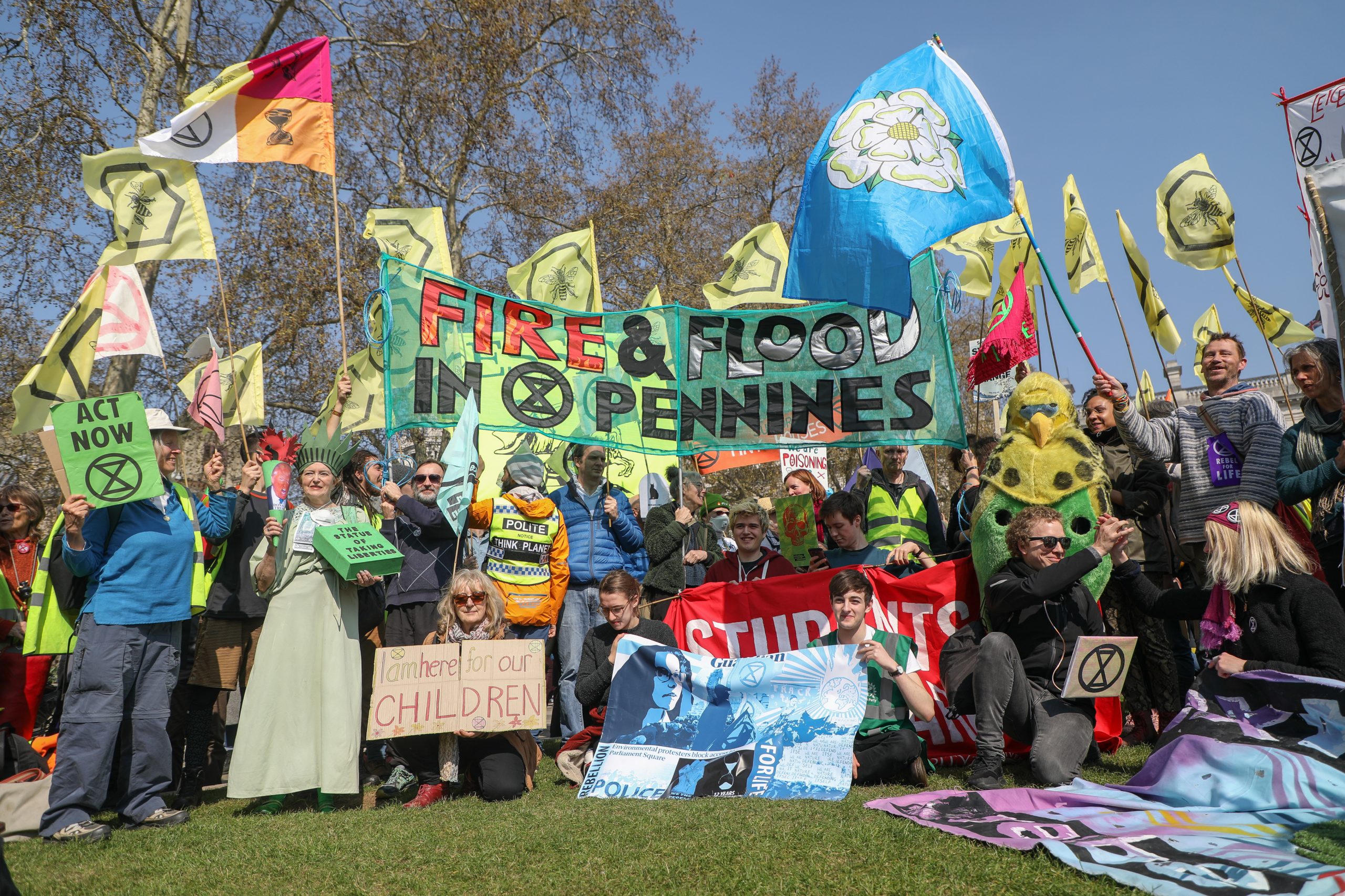
Each banner first involves a group conversation to come up with a slogan and a collective sewing effort to make each banner. In case anyone wants to have a go at this banner method, a fair warning: it’s not speedy.
Creating a netty banner involves a lot of sewing. Materials we’ve always used are: scaffolding net; ripstop nylon (the type treated for kites and tents rather than silky parachute material); polyprop rope, if we want to be able to hang the banner; and black, inch wide bias binding (pure cotton, which creases nicely, rather than polycotton, which doesn’t). Beware of scaffolding net that is too loosely woven to stitch onto. You may also prefer to look for a less stretchy netting, or more sustainable materials.
Cut your letters out of the ripstop nylon and start your sewing by machining rope hems and pole pockets, if wanted, onto the netting. NB any midway pole pockets must be left until after the letters are sewn on. Meanwhile the bias binding can be creased along the letter edges, letter by letter, pinned, and machined on with one line of stitching (rather than the conventional two lines). This job can be done by anyone with a sewing machine and the skill. Next, pin the edged letters carefully onto the netting and gather as many friends as can be mustered, along with tea and biscuits, for the lengthy labour of hand sewing (big tacking stitches and, every so often, a back stitch) each letter onto the netting.
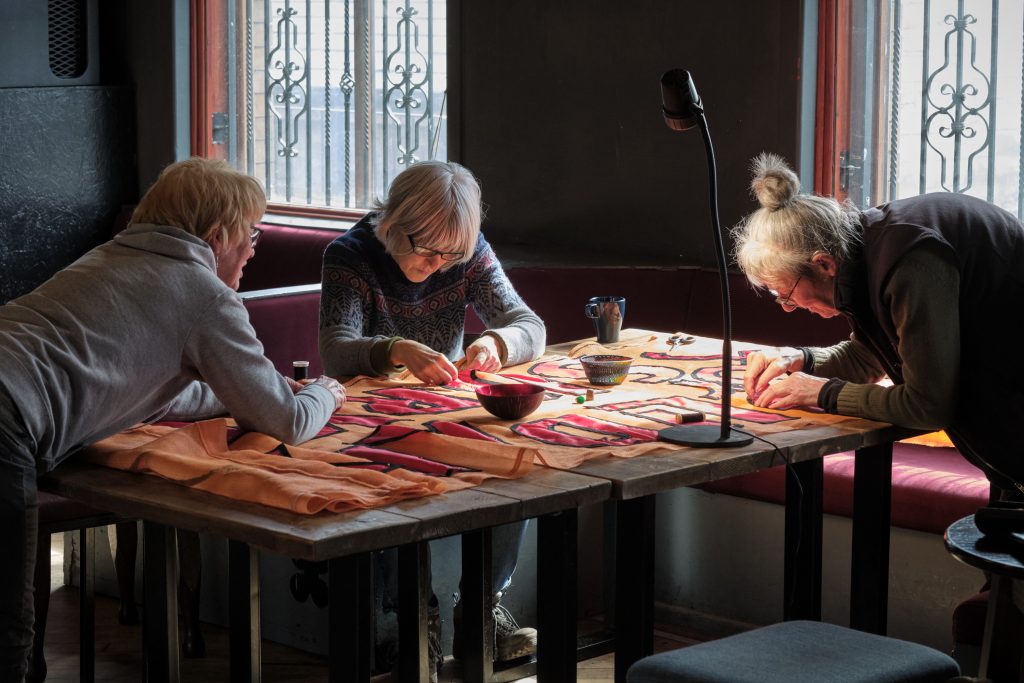
Fire & Flood In Pennines (2019), which is on display in PHM’s 2024 Banner Exhibition, was at least the 14th banner made in the netty banner style. The first created using this method was BP Fuels Climate Chaos, made and hung in April 2005 between two London plane trees outside BP’s London headquarters in St James’s Square, by the climate justice group Rising Tide.
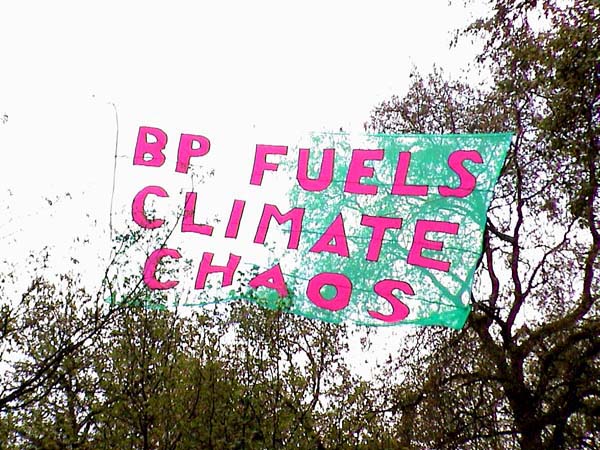
The way that the wind catching in our long, narrow banners could bend lampposts had long been a worry. The BP banner was going to be high, large, and square-ish, like a sail. So, scaffolding net, lightweight and wind-permeable, was ideal. And no-one, to my relief, argued with the notion that fluorescent pink, ripstop nylon letters would show up best against the sky, edged with black bias binding. Therefore, those essentially became our netty banner materials of choice, either for marching or for hanging banners.
Plane trees, while beautiful, are hard to hang banners from. At the ends of their long, snaky branches are forests of twigs to get through, and by the time we had finished hanging the banners the press had departed. It may or may not have helped that we had among us in one of the trees a later notorious police spy.
The fifth netty banner, Capitalism Is Crisis, was made originally for the 2009 Blackheath Climate Camp, where it flew between scaffolding tripods, sometimes framing the towers of Canary Wharf. After this, it appeared and later disappeared in 2012 above the tents of Occupy outside St Paul’s Cathedral.
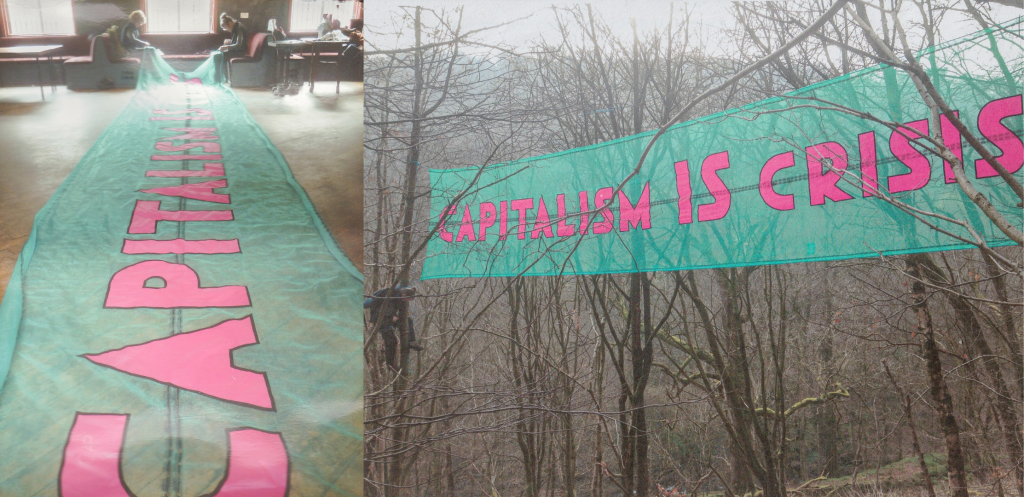
An exact replica was made (at the behest of the V&A) in 2014. This used to turn up regularly at the yearly Green Gathering, and then became rather popular in Hebden Bridge, where it still often appears on benefit nights at the Trades Club – which has been a kindly host to many long pinning and sewing sessions.
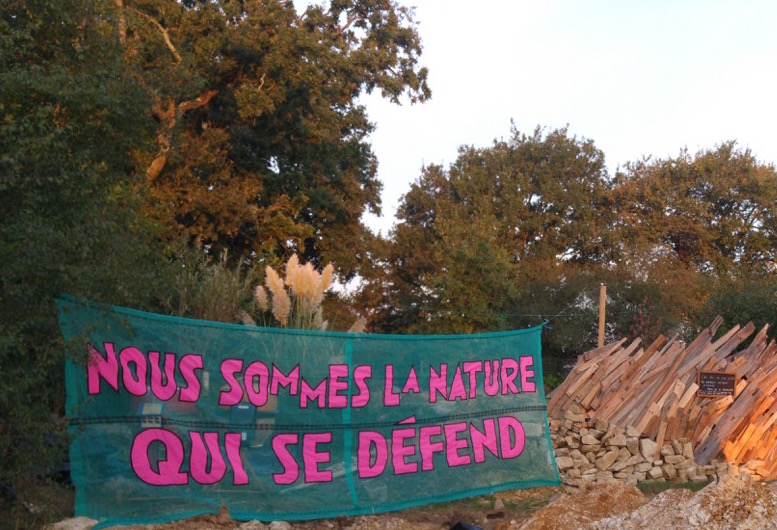
Two banners, Nous Sommes La Nature Qui Se Défend and its translation, We Are Nature Defending Itself, were made in autumn 2015 as very long marching banners for eco-protests at COP21 in Paris. They were confiscated by French customs in the wake of the Bataclan terrorist disaster that preceded COP21, but the French version eventually resurfaced at the French ZAD (Zones à défendre) eco-occupations.
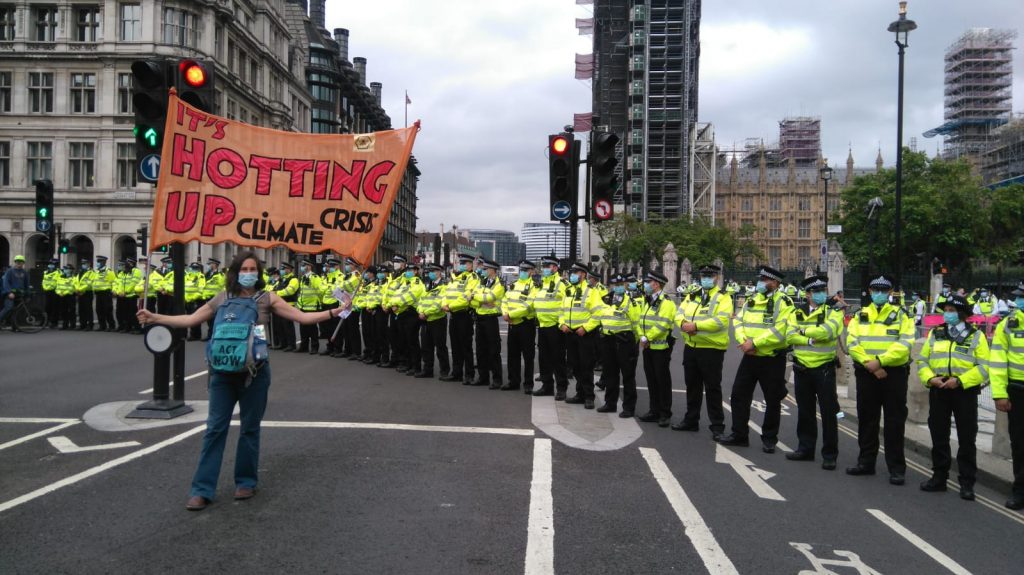
The oldest netty banner in Calderdale XR’s collection, It’s Hotting Up was made in September 2018 for a small climate demo a month before Extinction Rebellion declared itself. The words ‘Climate Crisis’ were later squeezed in at Calderdale XR’s request. It is also our smallest banner, made for two people to carry, but which can just be held by one madcap individual.
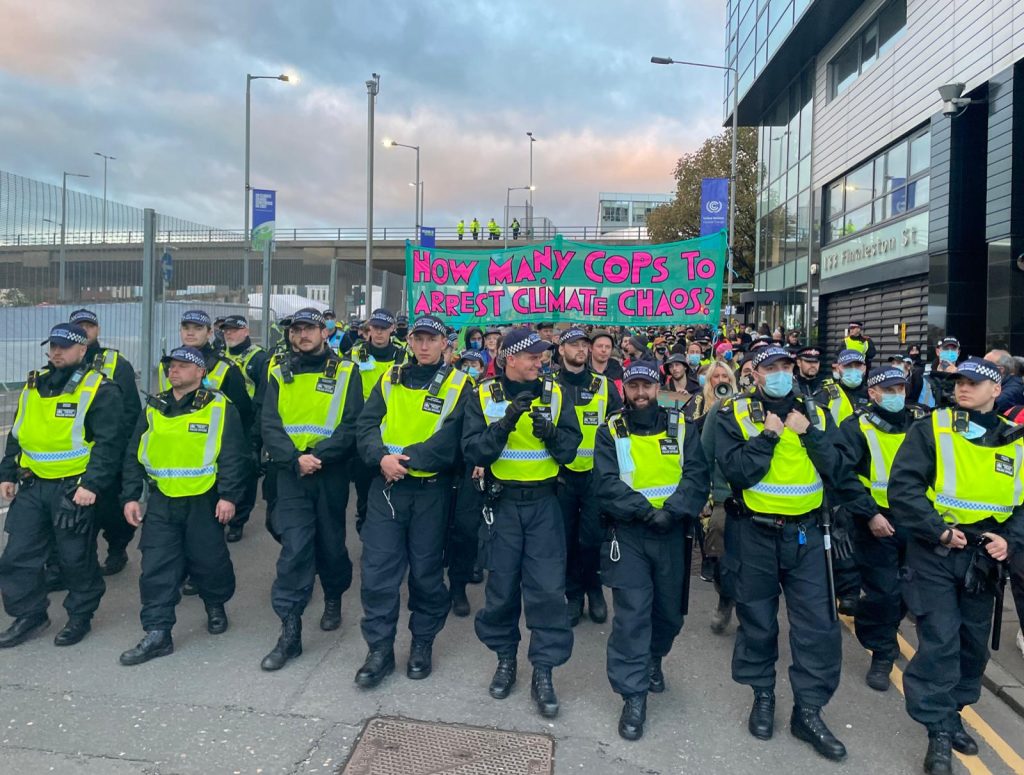
And last but certainly not least, a slogan which we magically arrived at one collaborative night caused Calderdale XR’s banner for COP26 in Glasgow to become our most internationally famous banner so far. How Many Cops To Arrest Climate Chaos? became a police magnet. They simply could not keep away from it.
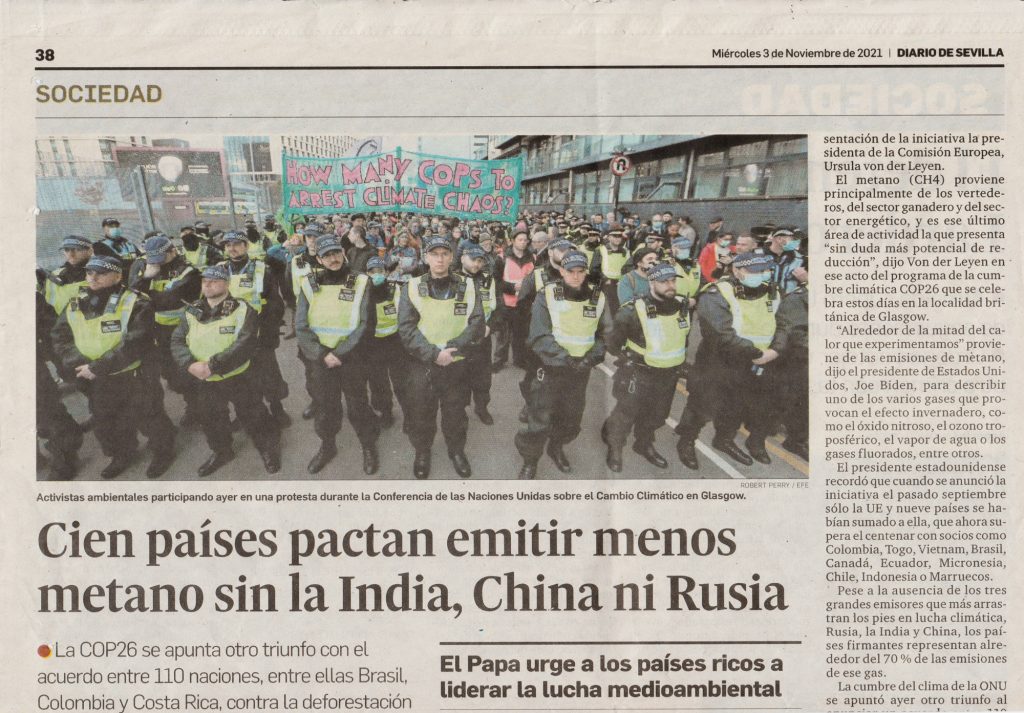
Guest blogs are not curated by PHM but feature voices on topics relevant to the museum’s collection. Guest blogs do not necessarily reflect the views of PHM. Images supplied by contributor.
Visit Fire & Flood In Pennines banner in PHM’s 2024 Banner Exhibition until 30 December 2024.
Read a guest blog about climate justice and what’s at stake, written by a ten year old activist in 2019.
Subscribe to PHM’s regular e-newsletter to keep up to date with our latest blogs and upcoming events, by taking our quick quiz to find out which radical are you?
An earlier version of this blog was first published in April 2024.